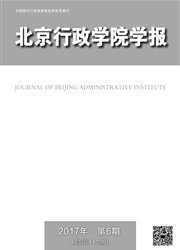

 中文摘要:
中文摘要:
流域治理的跨域特征所带来的问题超过了涉水部门单个主体的能力,从而带来了流域治理的协同失灵和碎片化问题。对“河长制”的观察表明,“河长制”跨部门协同可以较好地解决协同机制中责任机制的“权威缺漏”问题,短期内成效明显。通过横向层面和纵向层面的协调机制,大大提高了协同效率。这是一种新型的混合型权威依托的等级制协同模式。但是,以权威为依托的等级制纵向协同的基本特征没有改变,将会面临着“能力困境”、“组织逻辑困境”和“责任困境”的挑战。最后采用菲利普斯分析框架分析了影响“河长制”跨部门协同效率的因素。
 英文摘要:
英文摘要:
The feature of cross-watershed treatment shows that a single water-related department can’t finish it, hence the problem of failure of watershed treatment coordination and the problem of fragmentation of watershed treatment come out. The river-chief mechanism, an approach of inter-departmental coordination, can effectively solve the problem of lack of authority and has an obvious effect in the short run. The river-chief mechanism greatly improves the cooperative efficiency by the coordinative mechanism at the horizontal level and vertical level. This is a hierarchical model of coordination based on a new type of hybrid authority. However, the basic characteristics of vertically hierarchical coordination based on authority doesn’t change and faces with the dilemma of capability, the dilemma of organization and the dilemma of accountability. This paper makes an analysis of the factors influencing inter-departmental coordination efficiency of the river-chief mechanism by Phillips’analytical framework.
 同期刊论文项目
同期刊论文项目
 同项目期刊论文
同项目期刊论文
 期刊信息
期刊信息
